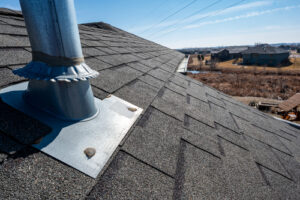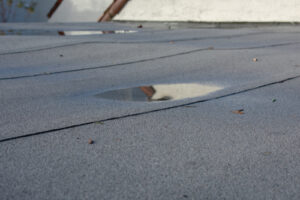While San Diego may not be famous for scorching summers, when the temperatures rise, your roofing system feels it. Warm weather can silently create wear and tear that affects its lifespan, increases your energy bills, and even causes some serious damage down the road. That’s why regular maintenance and timely inspections are important.
If you notice any signs of deterioration, schedule a professional roofing repair in Del Mar to prevent further problems. Meanwhile, join us in today’s blog, where we explore how UV rays can affect your roof. Read on.
Does heat affect your roof?
Over time, the sun can cause shingles to degrade, compromising your roof’s ability to protect your home and potentially leading to leaks or structural damage if not addressed promptly:
UV radiation

Metal roofing is more resistant to UV radiation, but it can still fade, and over time, chalking can also occur.
When it comes to synthetic materials, they usually contain UV inhibitors, but with constant exposure, they can still degrade.
Thermal shock
During the day, your roof can reach 160°F, then drop to 40–60°F at night. This causes constant expansion and contraction of the materials, which is known as thermal shock. Over time, it can loosen fasteners, break seals, and compromise flashing, which eventually leads to hidden water damage.
Trapped heat
Proper attic ventilation plays a very important role in protecting your roof from the heat. In fact, without proper ventilation, attic temperatures can go over 140°F during the warm months. Not only does that heat radiate into your home, but it also affects your roof from the inside and shortens its life.
Accelerated aging
Even if your roof appears intact, prolonged exposure to heat and UV rays can speed up the natural aging process of the materials. This means components that should last 20-30 years can start failing much sooner. Shingles can curl, crack, or shed granules prematurely, while membranes can lose elasticity and become prone to tearing.
These subtle changes often go unnoticed until a leak or other damage occurs. However, routine inspections can catch these early signs, allowing you to take proactive measures.
Signs to watch out for
The heat can cause several visible issues, including:
- Fading or discoloration of slats or tiles.
- Bubbling or blistering on the surface, especially with bitumen or felt finishes.
- Loose sealant or flashing due to the thermal shock.
- Sagging sections where pooled water has collected or the material has weakened.
In case you notice any of these issues, reach out to a professional. They’ll help you take the necessary steps to keep your roofing in top shape.
Who provides quality roofing repair in Del Mar?

Whether you need us close to the Del Mar Fairgrounds or in another nearby neighborhood, you can count on our help. Get in touch with us today and find out why we’re the preferred choice of thousands of homeowners across San Diego!